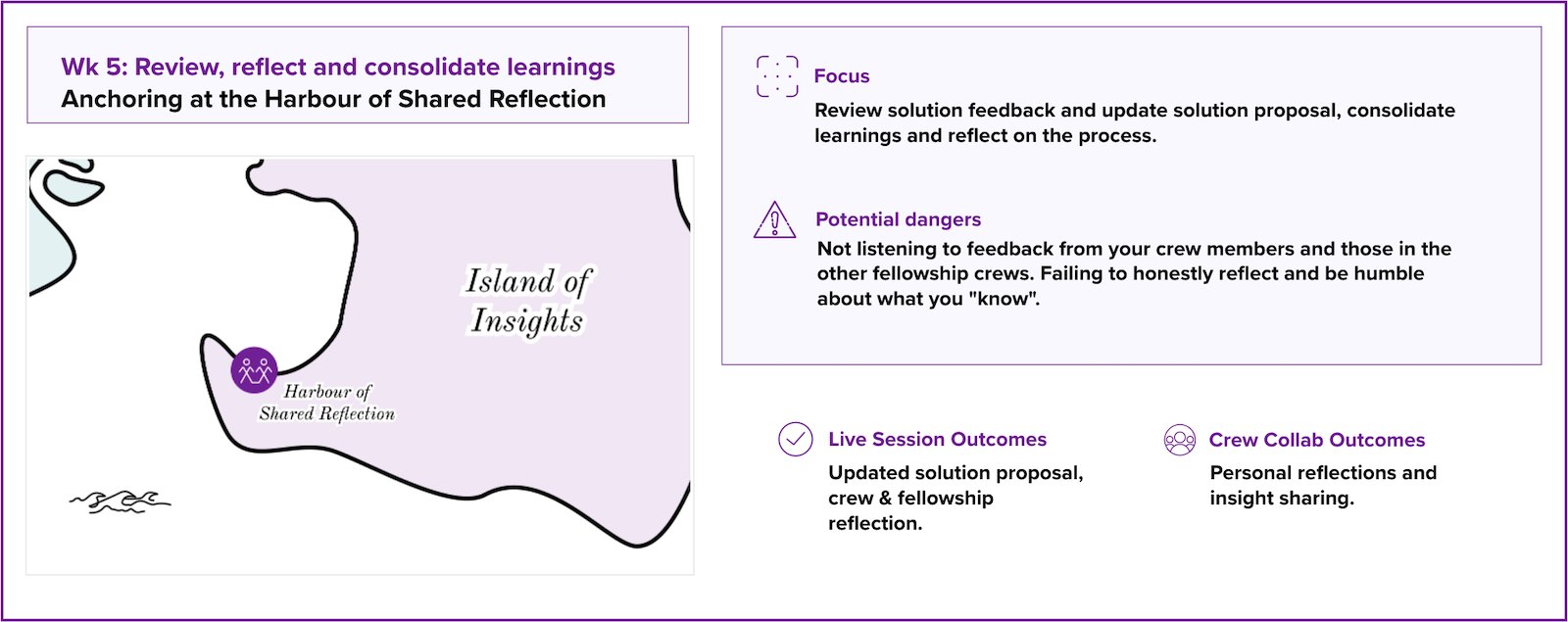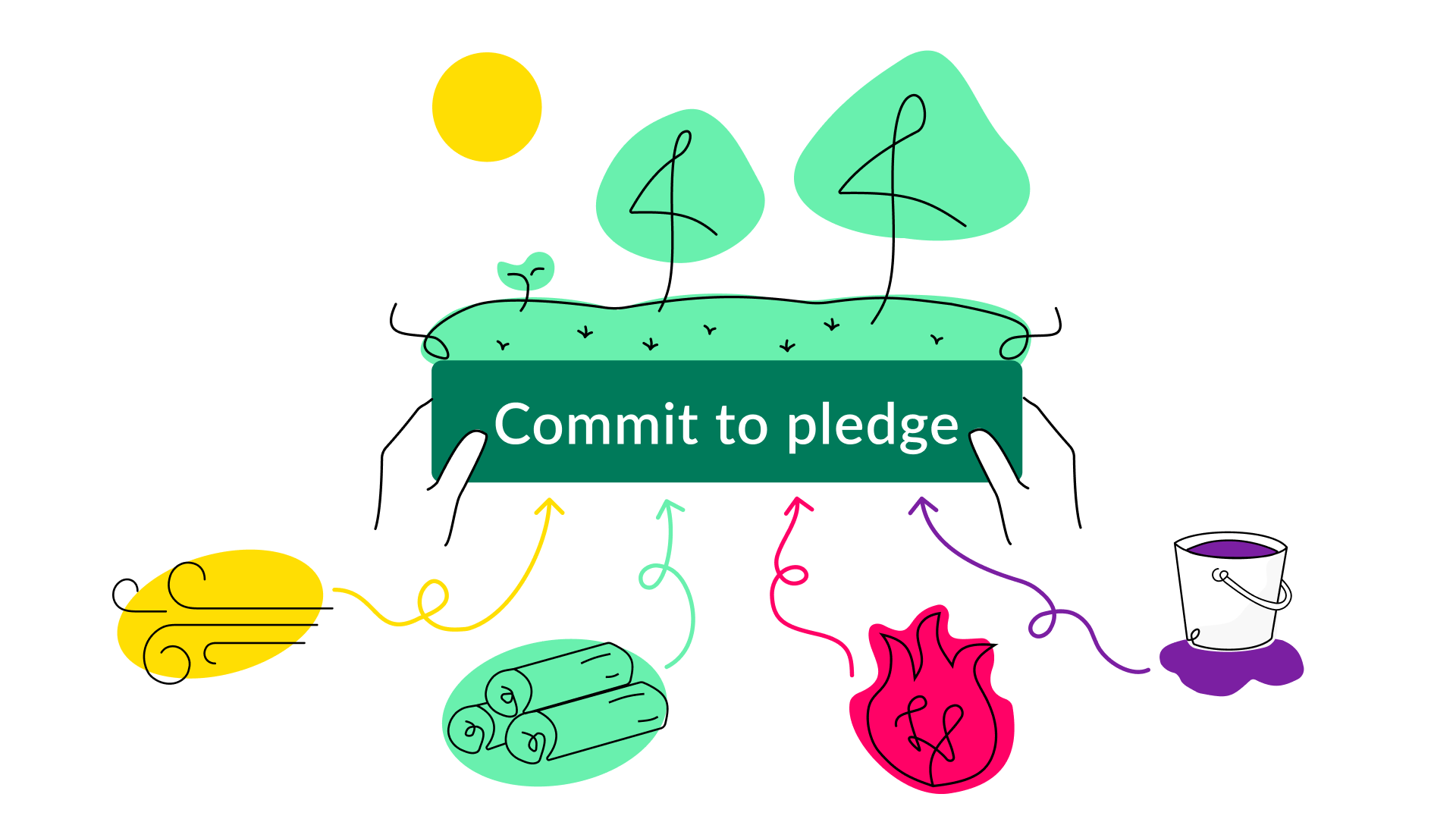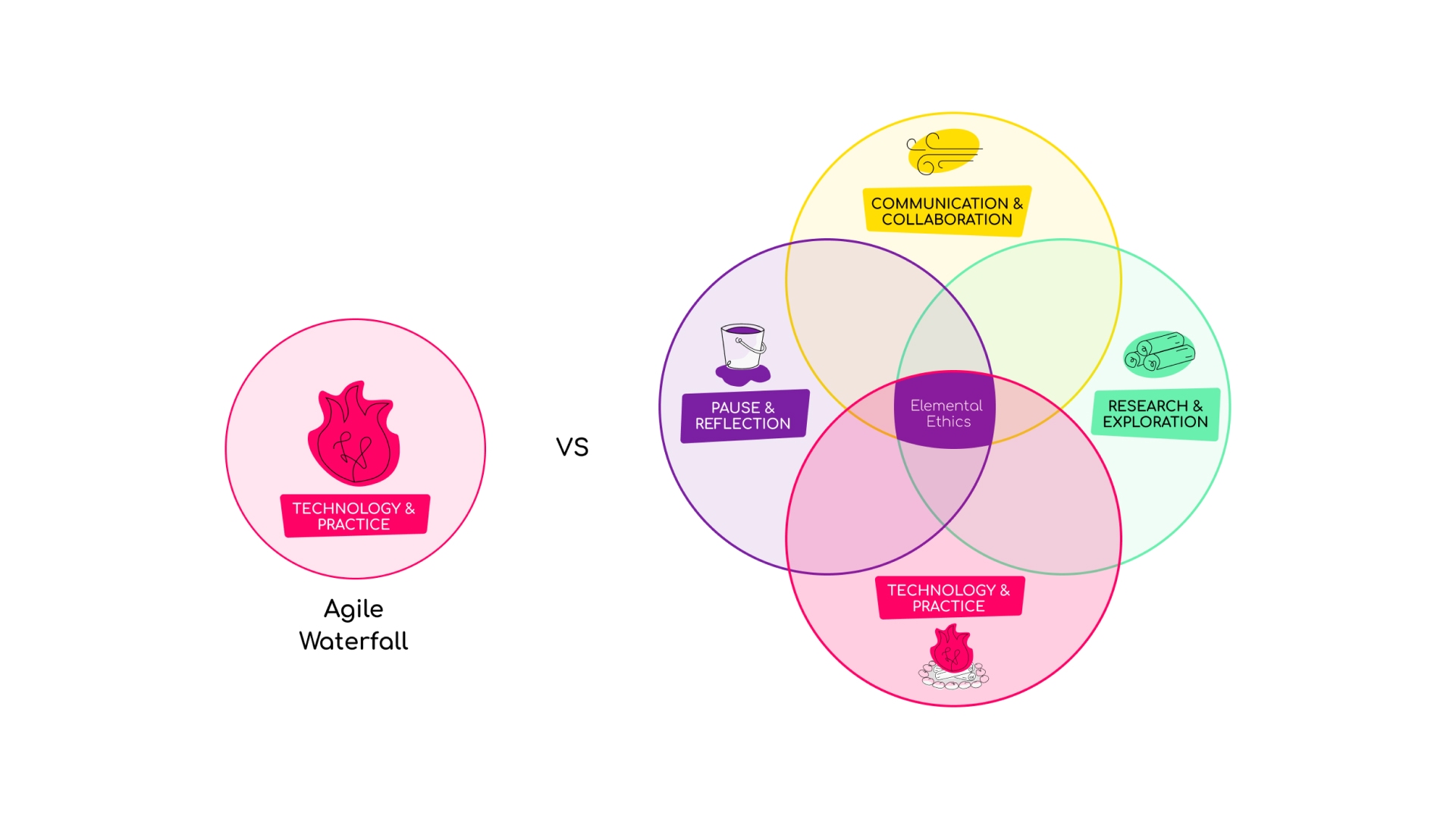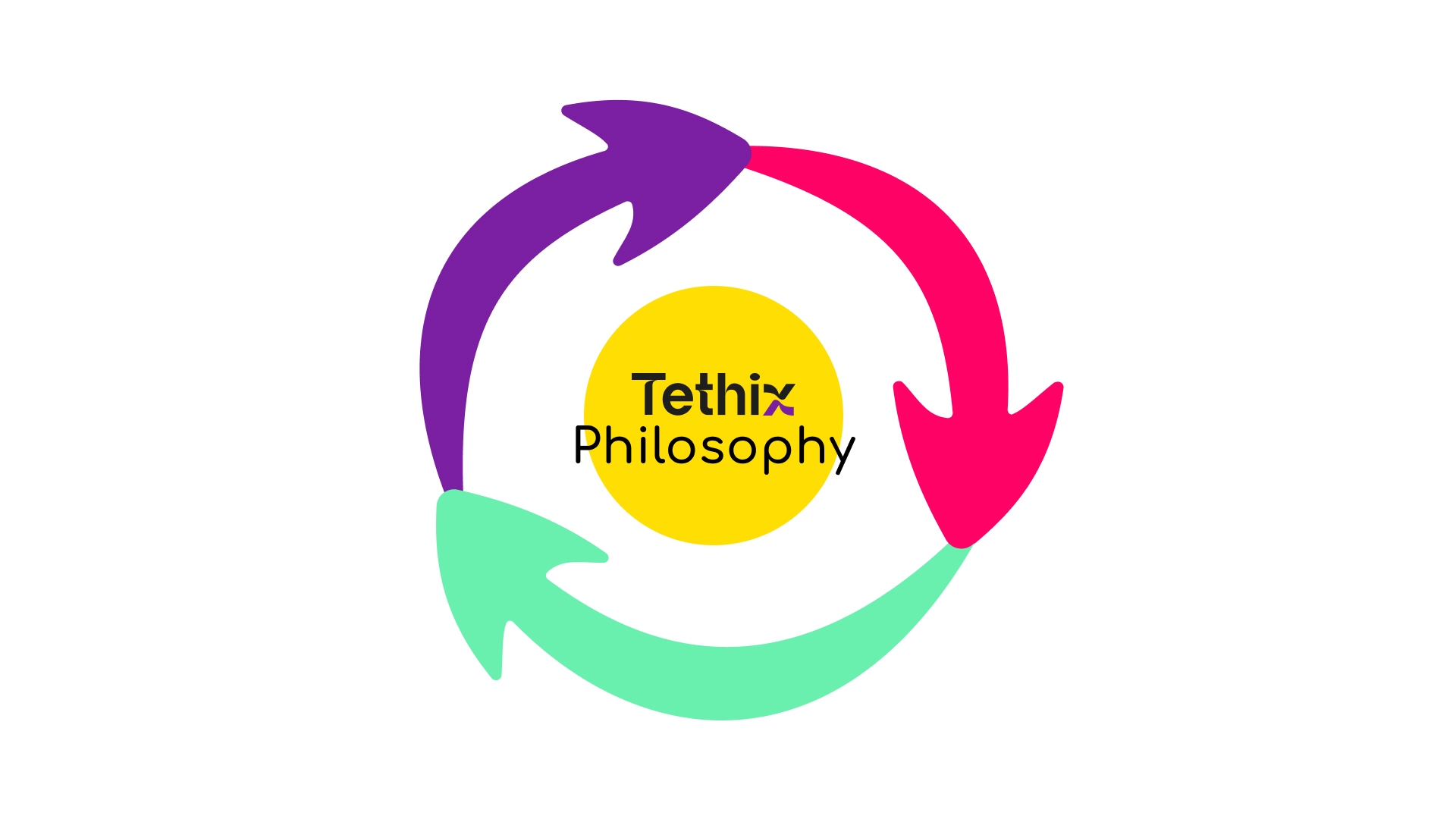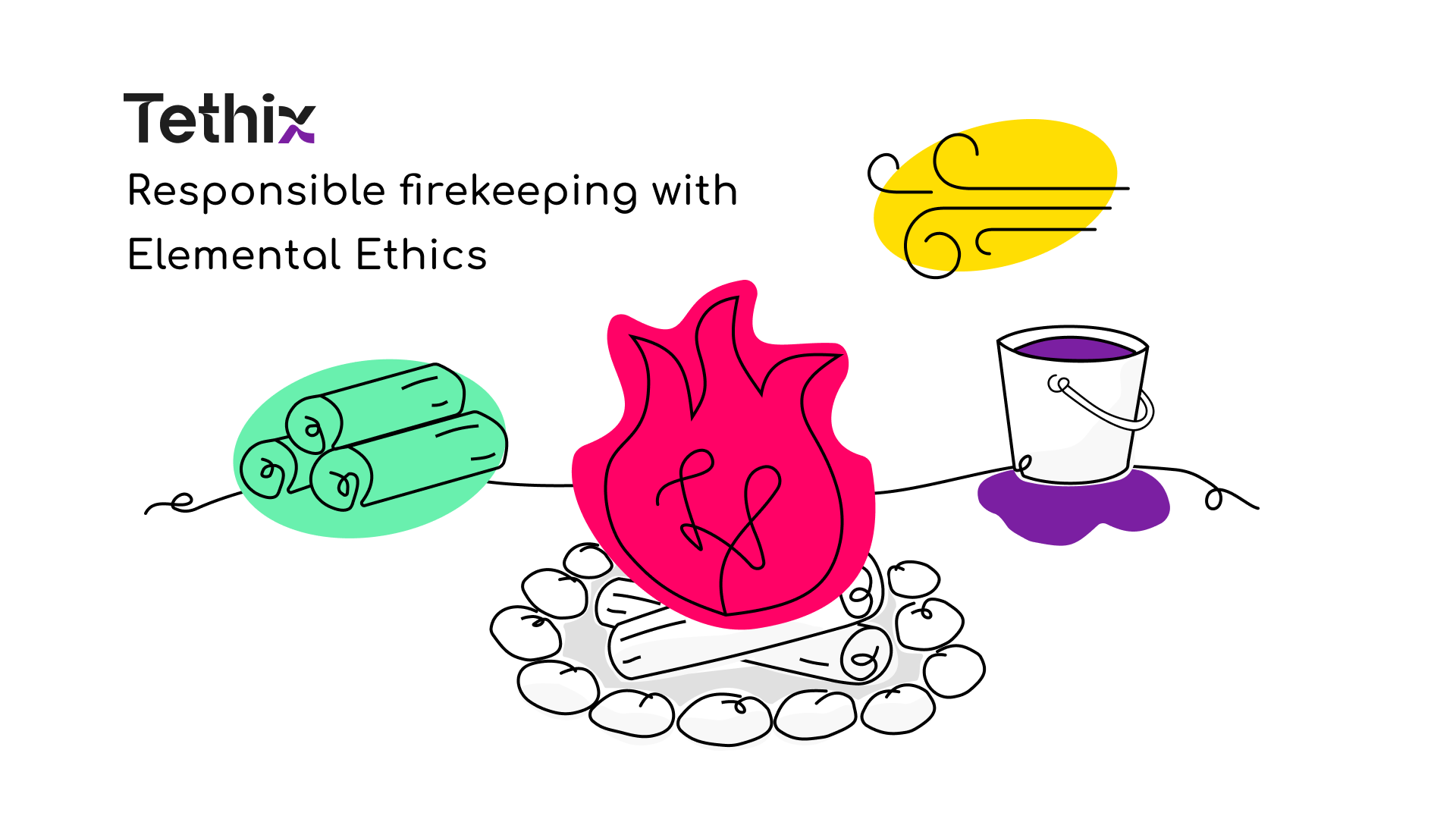Our pilot fellowship has now crossed the Tethix Learning Archipelago for the first time. Our penultimate port of call was on the island of Practicalia, where crews proposed and evaluated solutions to their tech ethics challenges.
If you’re new to this series, we invite you to start with the pre-launch and week 1 overview for additional context on our collaborative online learning experience in tech ethics and read the reports from week 2 and week 3 first.
Week 4 overview: solution proposal within limitations, fellowship evaluations
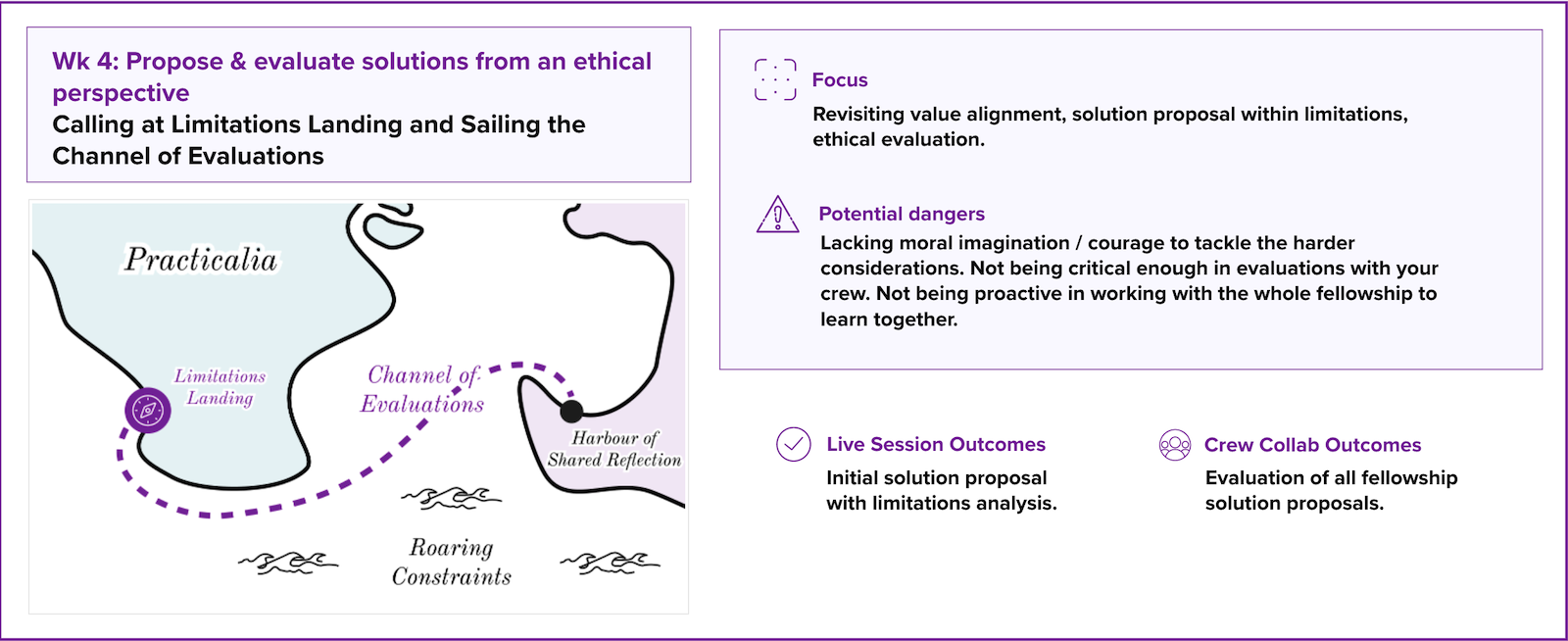
Our crews spent the past two weeks building a shared understanding of their challenges by embarking on a research expedition and exploring different ethical considerations. The research activities helped crews build a foundation upon which they were finally able to propose a solution to their challenges related to tech ethics.
Week 4 started on Tuesday, March 22, with a 3-hour live session focused on proposing a challenge solution and exploring limitations. During the session, crews had to:
- Propose a solution aligned with the crew’s purpose – challenge statement – and values defined in week 1.
- Select a vessel of change: a limitation scenario that we introduced as cards where different vessels represent different types of organizations, each with its own strengths and weaknesses.
- Discuss how the selected limitations impact the validation, implementation, and possible impact of the proposed solution. Also, consider whether the limitations might lead to any trade-offs and whether the vessel’s business model is aligned with the crew’s values.
The limited duration of our exploration journey doesn’t allow us to propose detailed solutions and engage in co-design practices. This is something that takes place in longer Challenge Based Learning journeys, on which our approach is based. So this week we wanted to give our crews the opportunity to brainstorm possible solutions while also considering real-world constraints that often force us to make ethical trade-offs that go against our values. The discussion on limitations and ethical trade-offs was the most important outcome of this week’s sessions.
We guided this week’s activities with a Mural template, with crews working independently in Zoom breakout rooms for the majority of the live session.
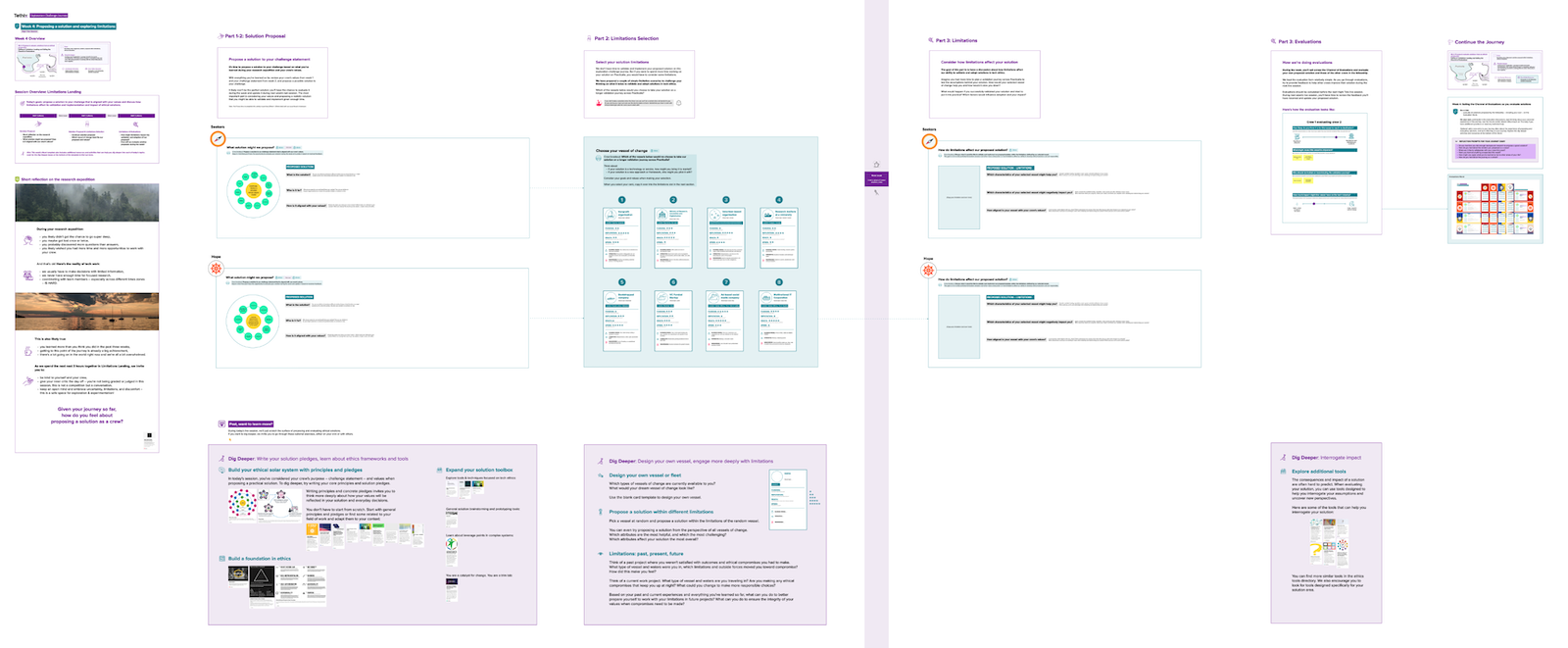
After the live session, we copied all proposed solutions into an evaluations template. This was designed to enable crews to review their own solution and the solutions of the other crews in the fellowship for the remainder of the week (more on that later). The goal of fellowship evaluations was to gather some peer feedback and give crews some insight into how other crews approached the same journey.
Week 4 live session modifications and details
Week 4 is where a lot of the previous crew activities – such as aligning values, defining purpose, exploring the problem space – converged, and crews got the satisfaction of proposing an actual solution to their challenge statement. Given the timing issues we experienced during week 2’s live session, and the limited time we have to work on solutions, we decided to simplify this week’s session by removing some activities and making the remaining ones easier to complete.
To accommodate fellows interested in scratching beyond the surface, we added optional bonus activities and resources to the live session Mural. Fellows will be able to revisit these at any time as we provide a PDF export of each live session’s Mural.
To provide closure to the research expedition, we took a couple of minutes at the beginning of the session to acknowledge the difficulties and frustrations of doing research given the time constraints and coordination challenges. These are all constraints that limit us in real-world projects. We reassured our crews about their progress so far, despite any uncertainty they might be feeling. We invited them to keep an open mind – and growth mindset – during the session because we anticipated that some participants might be uncomfortable with having to propose an imperfect solution within a limited time.
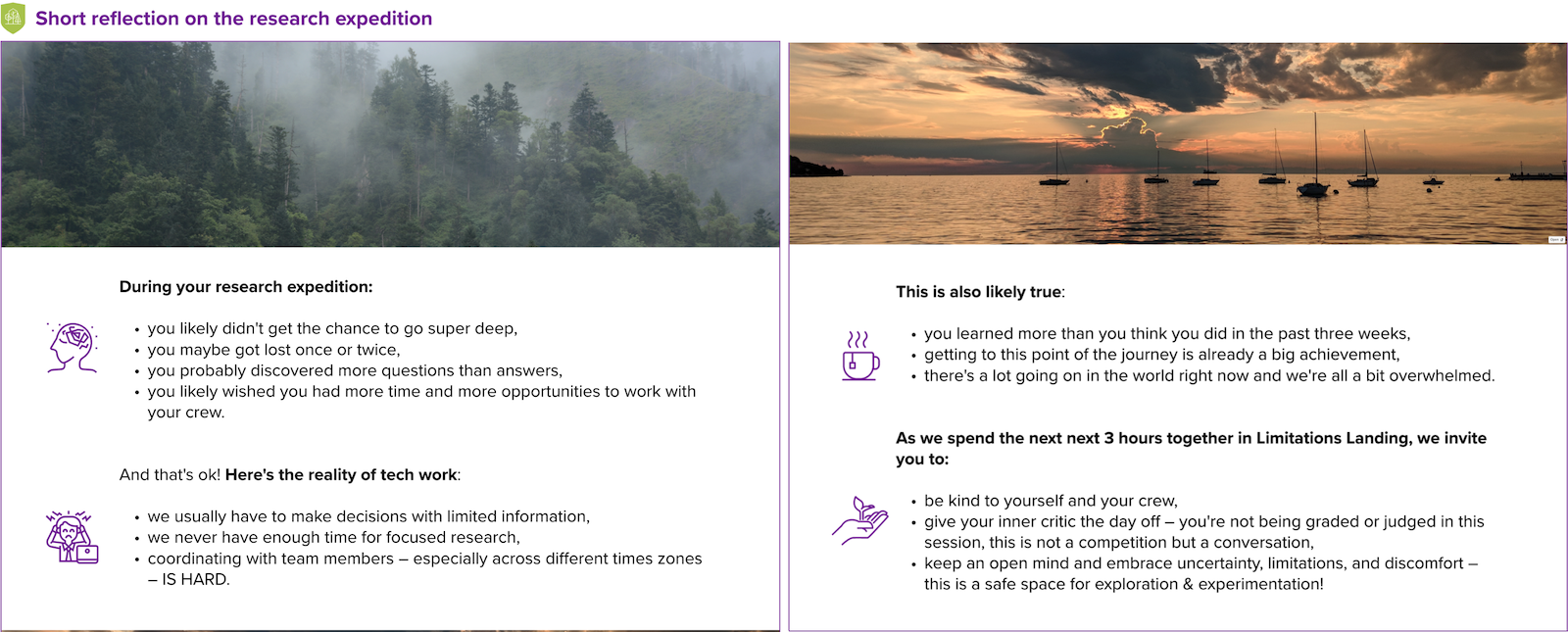
We made the solution proposal form reasonably simple. As a starting point, we brought in the crews’ values and purpose. We then asked the crews to briefly describe their solution in one to two sentences, identify their target audiences, and think about how the proposal is aligned with their values. Crews had a total of 40 minutes available to brainstorm solutions and briefly describe their chosen ones.
To jump-start the discussion on limitations and ethical trade-offs in part two, we created vessels of change cards that represent limitations scenarios. By infusing a bit of storytelling and playfulness, we encouraged crews to think about attributes that might help or hinder the process of actually implementing the proposed solution. Even though the limitation scenarios are simplified, the cards made it easy for crews to think about which attributes are important to them (e.g., “We need a high reputation, and we can sacrifice a bit of speed for that.”) and choose a business model that is aligned with their values in a relatively short amount of time.
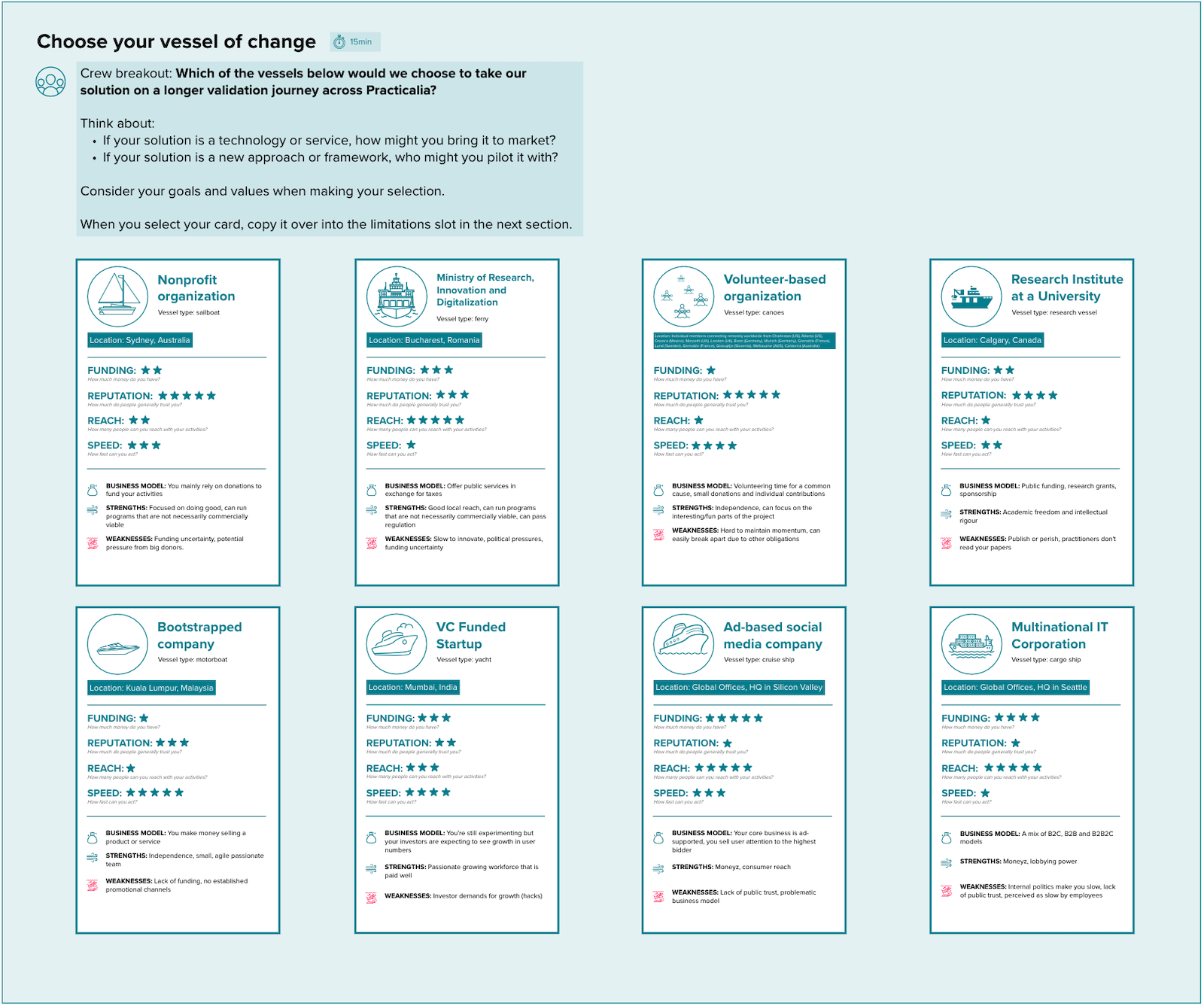
As in previous weeks, we found it very valuable to read about the live session experience from a fellow’s perspective, which includes some additional insights into how one of the crews approached the activities.
The fellow’s blog post mentions the omission of the solution pledge activity, which we removed as a required activity in the process of simplifying the session but described in the optional dig deeper section of the template. We designed these optional activities for each part of the session, some more focused on activities, others on additional resources. As an example, the screenshot below shows the optional bonus activities related to limitations scenarios, in which we encouraged fellows to design their vessels of change and think about limitations in their own projects.
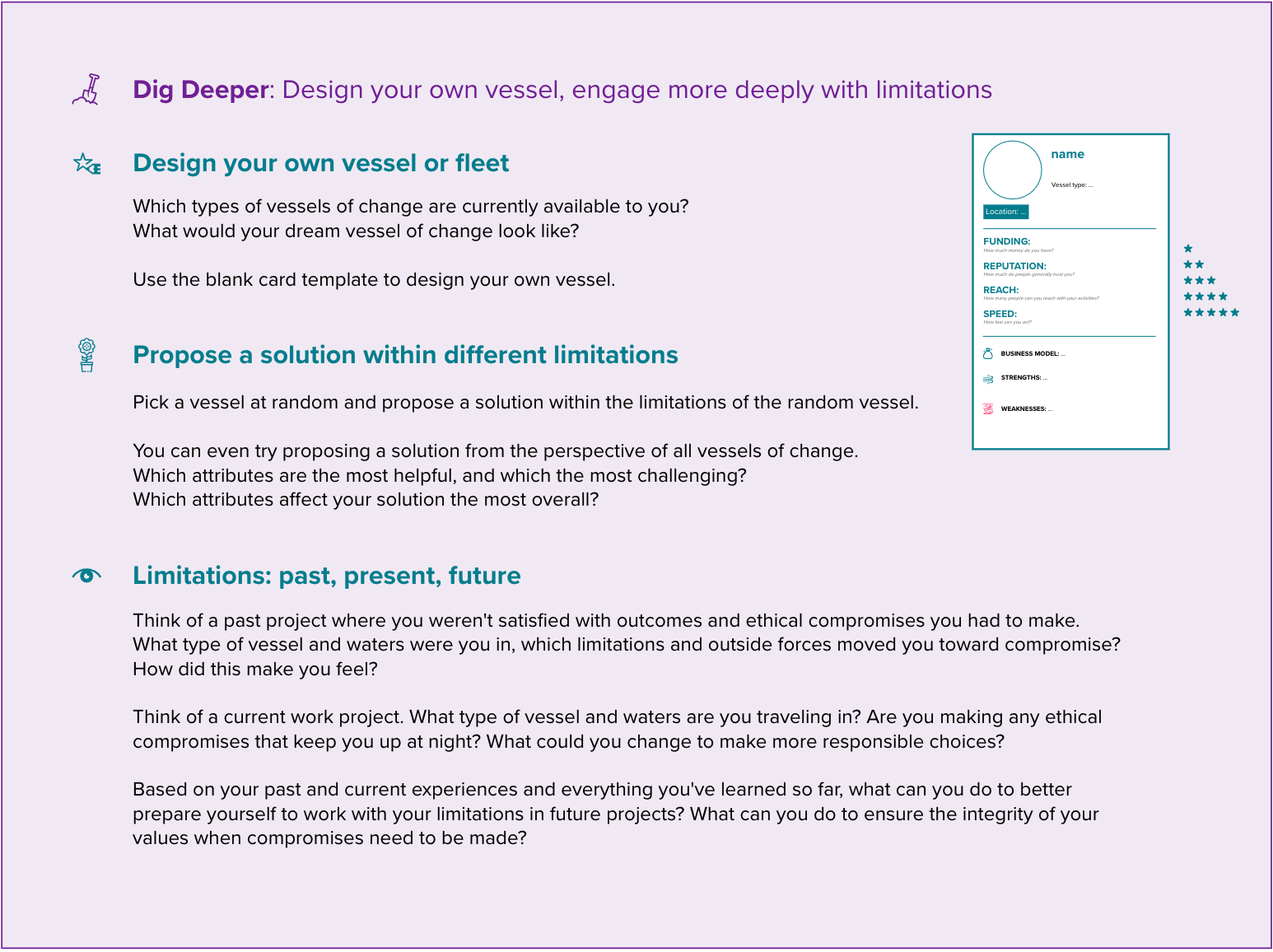
Given the intensity of the main session and this week’s evaluations, it’s unlikely that many fellows engaged with these optional activities. It serves as an additional activity they can return to when they have more time – or the need – to dig deeper.
Week 4 fellowship evaluations details
The main activity between week 4 and 5 was for all crews to evaluate solution proposals across the fellowship – including their own. This gave crews an extra week to think about their solution while also reviewing other crews’ approaches. The crews will review the received feedback during the final live session.
To support the evaluation process, we created an additional Mural template for evaluations. This is essentially a large evaluation table: each of the four rows presents each of the solution proposals, and the four columns include evaluation forms for each crew. We used the sail colors chosen by crews in week 1 to help crews keep track of their row and columns. The same template will be used next week when crews get the chance to update their solution proposal.
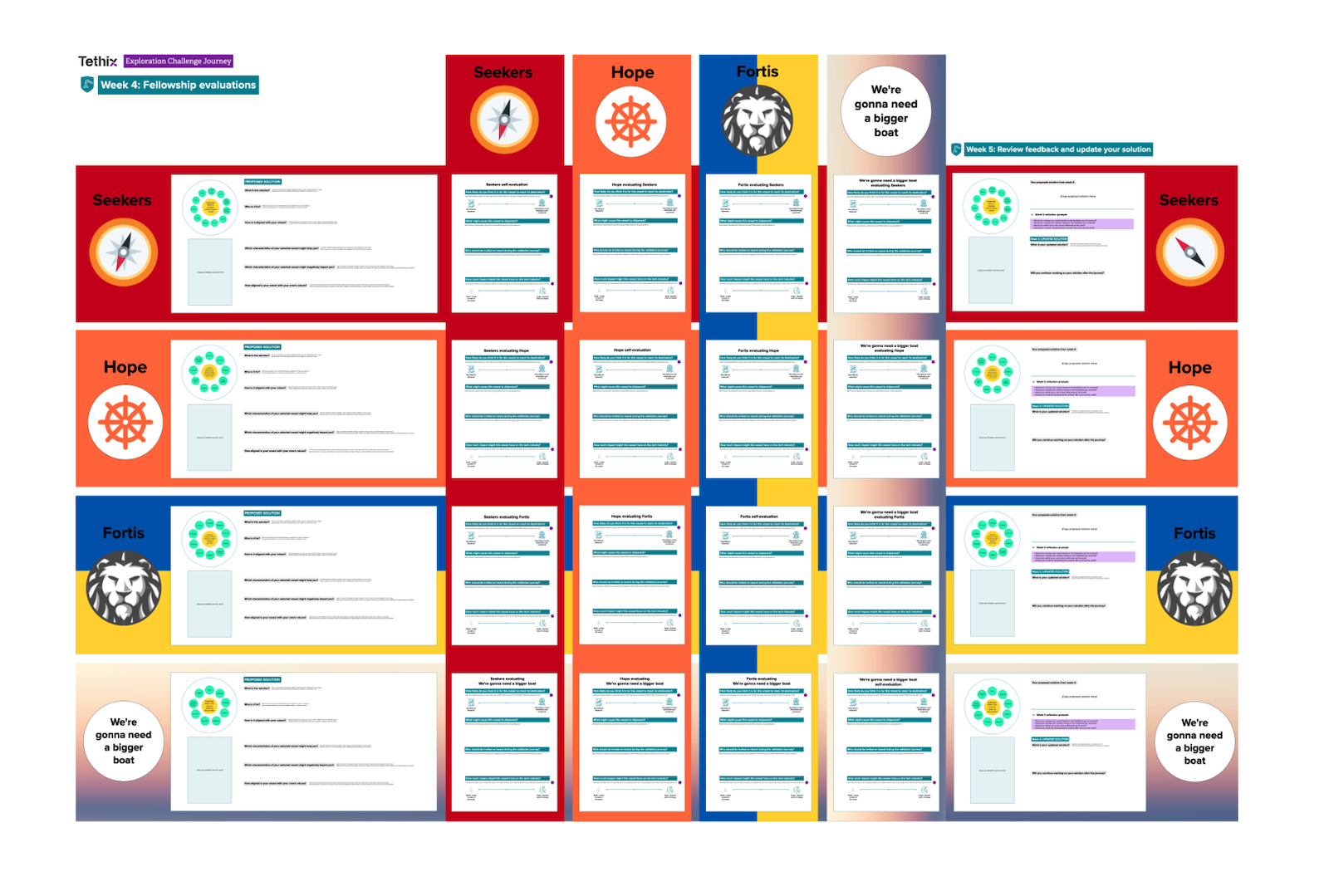
We kept the evaluation form fairly simple, with two Likert-scale and two open-ended questions, all infused with a bit of playfulness and storytelling. Anticipating crews would not be able to dedicate a lot of extra time to this activity, we aimed for a format that could be completed in about an hour total if done synchronously as a crew – something we encouraged the crews to do. Some of the crews decided to evaluate solutions individually first and then combine them by the end of the week.
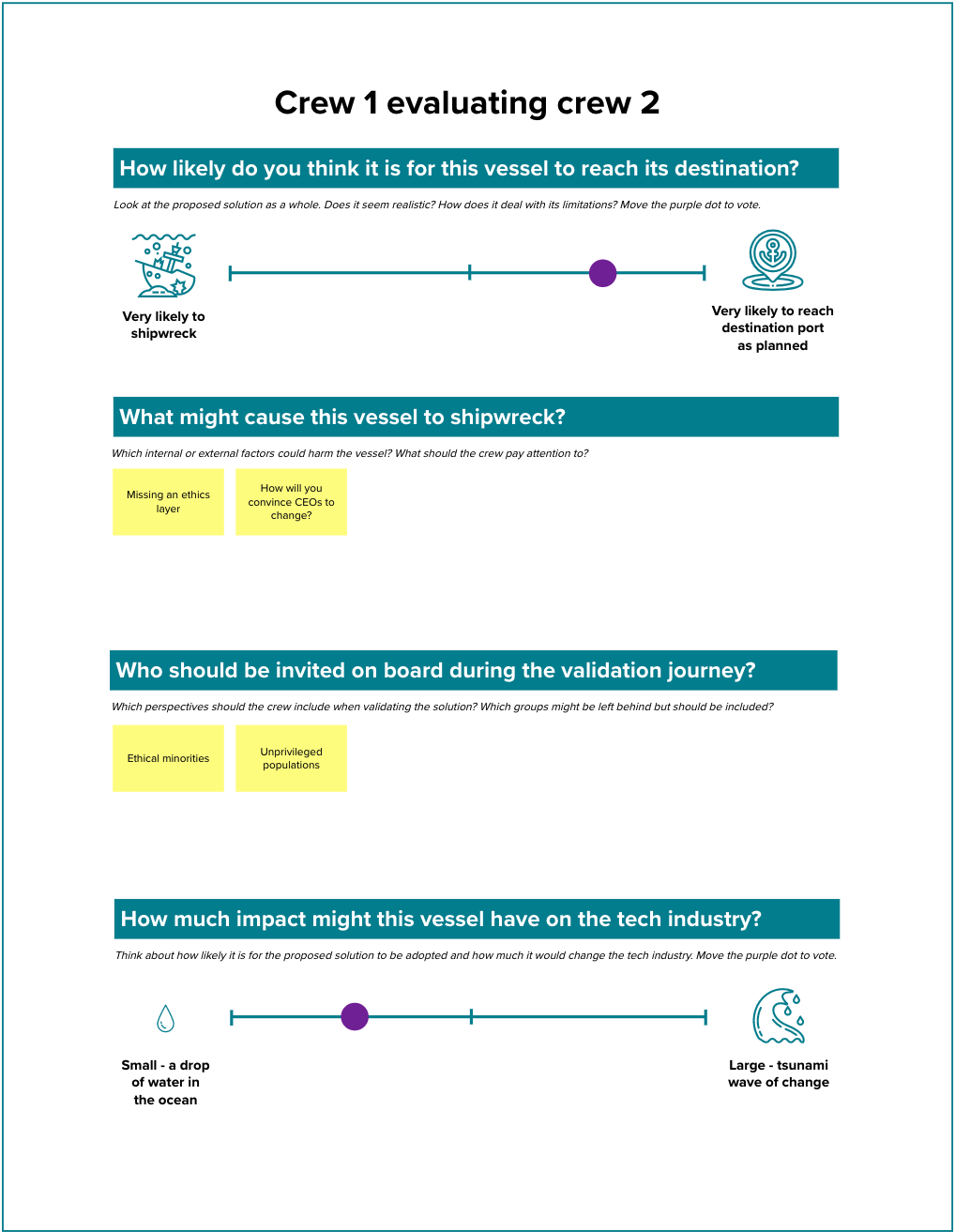
Overall, good feedback emerged from this activity despite the simplicity of the evaluation form and having only surface-level solution proposals to review. The live session Mural provided additional bonus resources for fellows interested in more in-depth ethical evaluations.
Week 4 preliminary observations: diverging crew dynamics
The changes we made to this session – simplified activities and evaluations – worked out well overall. However, we did observe that the diverging crew dynamics we noticed last week caused surprisingly large differences in how the crews experienced this week’s session.
Both crews in the High Tide session seemed to have developed the required trust and ease – even though they have different crew dynamics – and completed all activities ahead of time. Members of both crews seemed to enjoy this week’s session and gave us positive feedback on the process. In contrast, both crews in the Low Tide group:
- struggled to finish the live session activities within the time limits;
- showed more uncertainty during the session, and;
- finished the session with more anxiety about having to do evaluations on imperfect solutions.
A different time slot – to accommodate different time zones – is the main difference between the High Tide and Low Tide groups. In both groups, crews were formed randomly and are comprised of strangers. We use the same materials and the same approaches with both groups. If anything, the Low Tide group might have the advantage of being able to review outcomes from the High Tide session that takes place 14 hours earlier (but that doesn’t seem to be the case). It is worth noting that both Low Tide crews had members who joined this week’s session later, having missed some of the important parts. This temporary disruption may have created time pressure to get the late comers updated on the session activities.
Still, it does seem that crew dynamics are the key factor in how comfortably each crew sails through the journey. As we observed last week, the crews that didn’t quite manage to establish ways of working in week 1 seem to be finding it increasingly difficult to reach decisions and effectively listen to each other with each passing week. This, in turn, probably makes them less likely to spend additional time working together.
In contrast, one of the crews where its members seem more at ease with others, arranged to meet before each live session and a day after every week. Hence, their shared understanding and comfort seemed to grow with each passing week, making it easier to face whatever challenges we design in this experience with confidence. Such crews have the experience of sailing together and facing challenges as a crew, while the divide grows deeper in crews where members keep rowing in opposite directions, making it increasingly difficult for them to complete shared activities.
Despite the different experiences, all crews are still on track to complete their journey. We’re very interested in seeing how being part of different crews will affect the participants’ outcomes and their overall program feedback.
Coming up next: the journey ends with shared reflections
Our first pilot journey ends with a final live session. This session will give crews the opportunity to review received solution feedback and update their proposed solutions. They’ll discuss and decide whether they wish to continue developing their challenge solution after the journey. We’ll then also take the time to reflect on the shared journey experience and invite participants to fill out a post-program survey.
